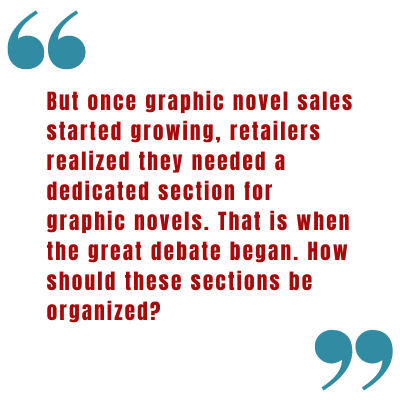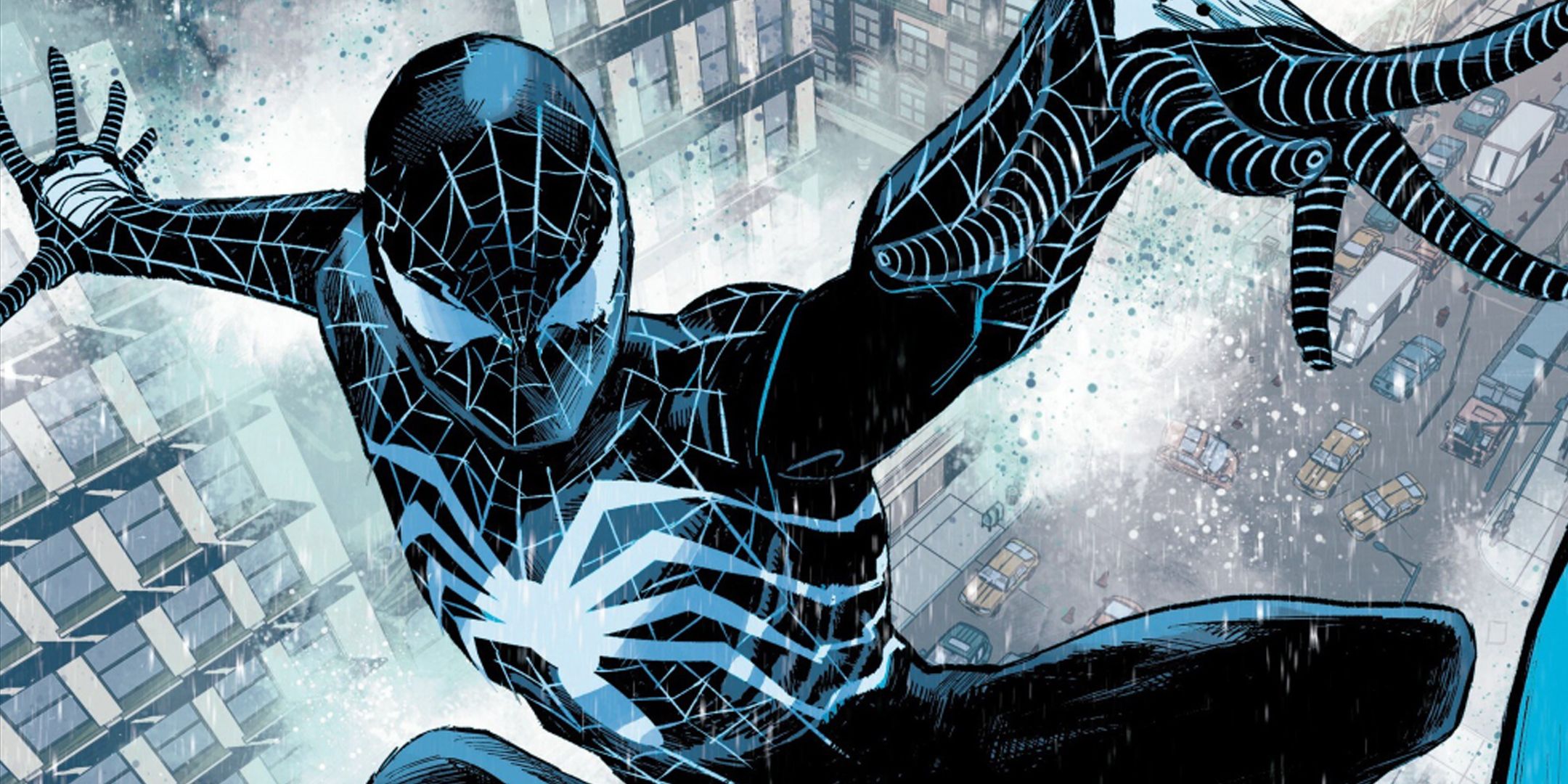 by Rich Johnson
by Rich Johnson
[Editor’s note: this is the first in a series of articles by graphic novel publishing pioneer Rich Johnson. I’ve illustrated it with photos of various bookstores that I’ve taken over the years.]
There have been many times in the past that profound changes occurred in the comics industry. Senate hearings, the Comics Code, distributor wars, the collector’s boom in the early 90s, and more recently the loss of a major distributor.
Additionally, there is the threat of crippling tariffs, the challenge of building new titles and authors, and more competition from more publishers. Over the course of several articles, I want to look at some of the issues that challenge this industry and offer some advice.
My first topic is about the way books are shelved by bookstores. First, a little history to give us an idea why graphic novels are shelved the way they are in bookstores.
In 1997 when I started working at DC Comics, my job was to sell into markets that didn’t care much about graphic novels. The bookstore and library markets. The chain bookstores might have carried a few graphic novels jammed at the end of the science fiction section. They tended to be the same books at all the chains; Watchmen, The Dark Knight Returns, maybe a few of the black and white Marvel Essentials and a Star Wars or Star Trek collected edition. There was no dedicated space for the medium.
But once graphic novel sales started growing, retailers realized they needed a dedicated section for graphic novels. That is when the great debate began. How should these sections be organized? The customers at bookstores were not the comic shop Wednesday warriors. These were more casual readers. They probably didn’t know the talent and they may not have even bought a comic in a long time. There were plenty of lapsed readers who got back into comics because they could find trade paperbacks in bookstores.

However, I understood people know DC Comics and Marvel as brands. Although when I was representing DC Comics at trade shows, I often had retailers and librarians ask me if I carried Spider-Man.
But with the rise of Vertigo and creator owned titles and with Random House releasing literary graphic novels like Chris Ware’s Jimmy Corrigan: The Smartest Kid on Earth, how the graphic novel section was organized was getting complicated.
Vertigo, the creator owned imprint of DC Comics was beginning to grow. Vertigo was founded by the legendary editor Karen Berger and under her guidance came Sandman, Transmetropolitan, Y the Last Man, Preacher, 100 Bullets, Fables and other titles. These titles were selling well and would become key backlist titles. But how should they be organized?
Because of the success of Vertigo, there was talk by graphic novel buyers at the bookstore chains that they wanted to organize the section by DC, Marvel, and now Vertigo Everything else would fall under “all other”. But it would still be alphabetized by title. And here is where the issue lies. The graphic novel section is the only section in bookstores organized by title. Every other section in the store is organized by author.
To this day sections are still organized by DC and Marvel and because DC discontinued Vertigo everything else is smashed together alphabetized by title. I think this needs to change. Because of the growth of creator owned titles, I believe that the section now needs to be organized by author. I think it would increase sales and raise awareness of authors.
Today if you walk into a store looking for The Walking Dead because you saw it on TV, that’s easy to find. But if you notice that that book was written by Rober Kirkman and you want to read other books by Kirkman then you had better be ready to look through the whole section. Invincible is under the letter I, Outcast is under the letter O, and Void Rivals is under V. But by the time you get to letter V you may be too tired and frustrated to continue.
Over in fiction, mystery, romance, science fiction/fantasy and horror, everything is shelved by author. If I buy my first Stephen King book and I want to read more by him, they are all right there. I don’t have to go on a treasure hunt to find other titles he’s written. As a result, it’s possible, really possible, that I will pick up more books written by King. And if I like him, I might start to follow him and become a loyal reader who will buy everything he writes.
There are several authors that I follow. And I do buy everything they publish. I have become, as Stephen King refers to his fans, one of his “Constant Readers”.
I know, of course, that a comic book writer often isn’t alone. Unless the author is an auteur, there is an artist or artists who have worked on the book. And yes, some artists are very popular, like Alex Ross, Sana Takeda, Fiona Staples and many others. While I know comics are a collaborative medium, in many cases the author is the one who came up with the idea for the story. And beyond that, there is a precedent in publishing children’s books that when there is an author and an illustrator, the author comes first in the listing. The author is also the first one listed in the metadata. Look at the listings on Amazon and other book e-retailers. The author is listed first. On the cover of the book, the author is listed first. Even on the cover of graphic novels, the author is listed first!

If a reader likes the artist, believe me they will seek them out. That’s what happened to me when shortly before I worked for DC Comics, I read Kingdom Come. The book listed Mark Waid as the writer, but damn if I didn’t try to find more books by this guy Alex Ross. I found Marvels and bought it and have become a lifelong fan of Alex’s. Same with Darwyn Cook, Tim Sale, John Romia Jr, Ed McGuiness and Neal Adams to name a few.
This is not a radical concept. So why in the hell is the graphic novel section still arranged by title? Why can’t it change? Could Books-A-Million or Barnes and Noble experiment and try this out in a store for say a year a monitor if sales increase?
My humble recommendation for how the section should be organized.
DC/Marvel – Alphabetize by character
Licensed Graphic Novels (Transformers, G.I. Joe, TMNT, etc) – Alphabetize by property
Creator Owned – Alphabetize by author
Non-Fiction Graphic Memoirs – pull from the bio and shelve adjacent to fiction graphic novels and arrange by author
Non-Fiction Graphic Novels – shelve adjacent to fiction graphic novels and arranged by author
Comic Strips (Calvin and Hobbes, The Far Side, Peanuts, Prince Valliant, etc.) – These are still shelved in the humor section. Comic strips belong adjacent to the graphic novel section. Arrange by author.
Archie – This is a special case. Archie publishes adult books like Archie VS. Predator that are shelved currently at most stores in the adult graphic novel section. That’s fine. The YA titles like Riverdale, should go in the YA graphic novel section. The biggest issue for Archie has been that the middle grade Archie titles are in the Humor section along with the other comic strips. They don’t belong in Humor as I doubt many eight- to twelve-year-old kids are checking out the Humor section to see if David Sedaris or Jeff Foxworthy have a new book out. Let’s make it easy for them and their parents to find Archie titles.
All I want to do is grow the industry. And I think this would be a step in the right direction.
Rich Johnson has worked for Waldenbooks, Scholastic, DC Comics, Lion Forge, and Diamond Book Distributors and was the co-founder of Yen Press. He is currently the founder of the publishing and media consulting company Brick Road Media, LLC. He has been an adjunct professor at both Drexel University and Pace University and is the author of four art books about Marvel Comics for Universe/Rizzoli and has a forthcoming book from Inside Editions.


 by Rich Johnson
by Rich Johnson


















 English (US) ·
English (US) ·